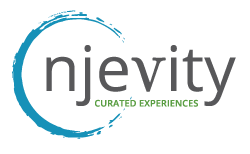Most CEO’s believe their data is more secure in house compared to the Cloud. They fail to realize that their servers are often stored in a locked closet or other room, vulnerable to theft and natural disaster. They also fail to realize that Cloud providers have much more expertise securing data offsite than their own internal IT department. Below is a list of the common objections and let’s consider the source while reviewing them.

Let’s face it, the number one objection of moving ERP to the Cloud is data security. This objection typically comes from the IT department struggling to stay relevant in a changing industry. Before becoming crippled by fear, consider the source of objections and take time to fully understand the Cloud. Chances are, you will see how Cloud Computing is simplifying business operations and becoming the new standard in business application deployment. You may also see that data storage in the Cloud is actually more secure than your current operations. Let’s consider the source of objections and relate them back to history.
Consider how we currently consume electricity in 2012. To turn on a light in the kitchen, you walk over to the wall, flip the switch and turn on the light, instantly. If you need a cup of coffee in the morning before heading to work, you plug in your coffee maker, turn it on, and your coffee begins brewing, instantly. This instant access is called “on demand.” Today, we have the power grid which allows us to use electricity as a pooled resource, on demand and we pay only for what we use. Sounds a lot like the advantages of the Cloud, doesn’t it?
Back in the early 1800’s when AC power was created by Robert Tesla, there were a lot of objections coming from those whose jobs and livelihoods were threatened by it. Back then, it took teams of technicians to maintain the power generators in the basements of companies whose operations were completely dependent on up time. Every company had their own generators and their own technicians whose sole role was maintaining the generators.
Those threatened often spoke of the dangers of AC power, the grid and how it would never replace DC power. As an example, Thomas Edison, determined to prove the point, tragically executed an elephant trying to instill fear in what would happen if they switched to the new, more efficient way of getting power. This just goes to show how far some will go to try to stay relevant when facing change.
Let’s apply these same principals from history to today. Currently, every company using business applications has their own servers, typically running in a locked closet, on premise. Each company also has an IT department whose responsibility is to maintain the hardware and software for optimal up time. Sounds familiar doesn’t it? And, like with any new technology or way of doing things, there will always be objections.
Our job is to consider the source of objections, determine the validity of these objections, and conduct an honest comparison of current operations compared to the new way of doing things.



